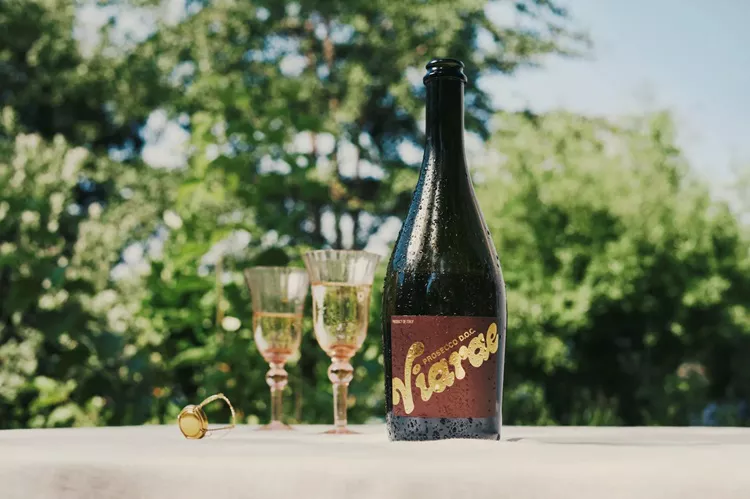Let’s get one important thing out of the way first: Prosecco is not Champagne. The two do not taste the same, and they are not produced the same way. Now that we know what Prosecco is not, let’s explore what prosecco is.
Prosecco is a white wine produced in the Veneto and Friuli-Venezia Giulia regions of northern Italy. The wine is typically bubbly, dry, and made from a grape variety called Glera. For centuries, this wine has been enjoyed by people around the world for its crisp, fruity flavors, lively body, and refreshing finish.
Originally named after a village of the same name in Italy, Prosecco was officially classified as a Designation of Origin Controlled Wine (DOC) by the Italian government in 2009 to distinguish between the grape variety and the actual wine. Like Champagne, which must be legally produced in the Champagne region of France to carry the DOC label, the DOC is a geographical designation and quality standard that Prosecco producers must follow in order for their wine to be sold as Prosecco.
Within the designated appellation, there are nine provinces where grapes must be picked, fermented, and bottled to qualify as Prosecco DOC: Trieste, Gorizia, Pordenone, and Udine (in the Friuli-Venezia Giulia region) and Venice, Belluno, Vicenza, Padua, and Treviso (in the Veneto region). At least 85% of the grapes used in the blend must be Glera, with no more than 15% of other grapes.
In addition to the broader Prosecco DOC, wines must meet stricter specifications to qualify for the Designation of Origin Controlled and Guaranteed (DOCG) requirements of the category. DOCG wines meet the same standards as DOC wines, but must also pass quality control tests to ensure they meet certain criteria approved by the local government.
Prosecco is almost always sparkling (spumante) or semi-sparkling (frizzante), but a few producers make still (tranquillo) Prosecco.
How is Prosecco made?
Like all wine, Prosecco is made from grapes. The Glera grape, which is almost all grown in Italy, is prized for its high acidity and fruity aromas, resulting in a refreshing wine that is usually around 11-12% alcohol.
The grapes are usually harvested in early September, after which winemakers press them and prepare the juice for filtering and fermentation.
Unlike Champagne, Prosecco uses the Charmat or tank fermentation method, which means that the secondary fermentation takes place in stainless steel tanks rather than in separate bottles. Fermentation in bottles is often referred to as the “traditional method” (or “Champagne method”) and usually takes anywhere from nine months to several years to complete. The secondary fermentation using the Charmat method takes only a few weeks, resulting in a younger, brighter wine.
How to buy Prosecco?
By fermenting for a shorter period of time in tanks rather than in bottles, winemakers can minimize production costs, which is why Prosecco sparkling wine tends to be cheaper than Champagne. Some Prosecco producers occasionally choose to ferment for months rather than weeks to add complexity to the bottling, and the current DOCG standard allows for this fluidity in fermentation times.
There are several different types of Prosecco on the market today. To get an idea of the sweetness of a particular Prosecco, the winemaker will indicate the residual sugar content per liter on the label using one of the following terms, in order from driest to sweetest: extra dry, dry, extra dry, dry, or semi-dry.
What does Prosecco taste like?
Due to its faster fermentation and use of the Glera grape, Prosecco tends to impart flavors such as apple, honey, melon and peach, as well as floral notes, while Champagne is more complex and tends to give off richer flavors such as toast, nuts or cherries, with a fuller mouthfeel.
Excellent versions of both wines are available around the world, so really, choosing between them comes down to personal preference, occasion, and budget. With its affordable price and fun, fresh flavor, Prosecco is the perfect everyday drink to enjoy right away, so next time you’re craving something a little less fancy, pick up a bottle of Prosecco and see how it works for you.
Related topics:


